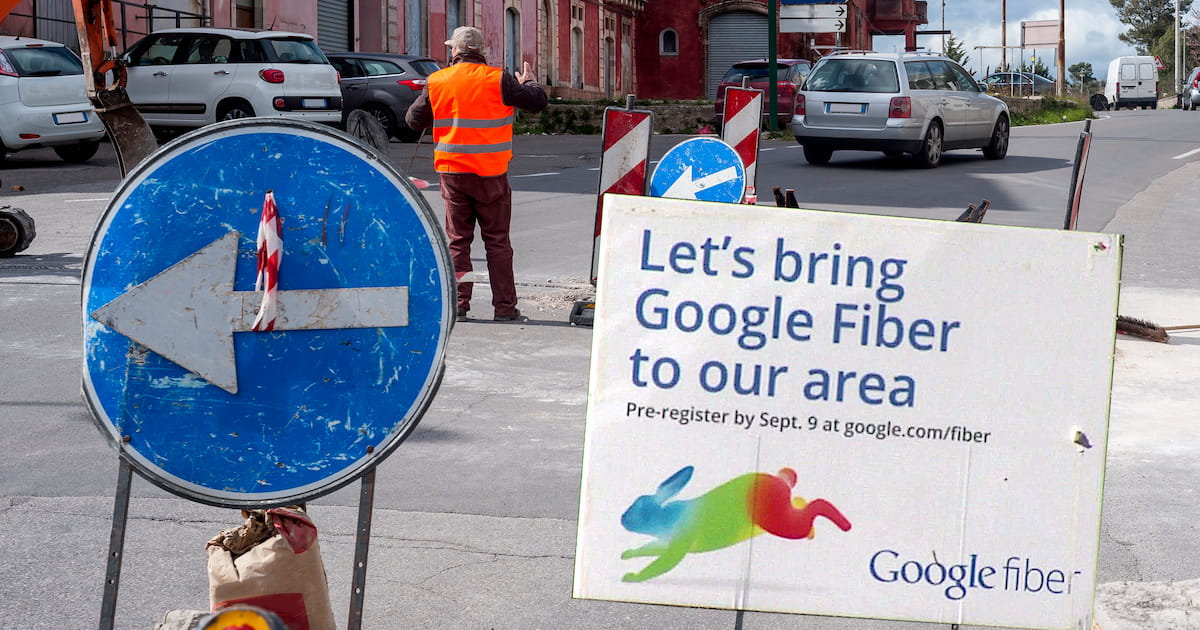10G Internet is Coming. Here’s how to get it.
What to expect as the next generation of cable broadband technology hits the US.
Jun 29, 2023 | Share
Technology
The simplest way to explain 10G internet is that it’s faster, more advanced, and more capable cable internet. Think fiber internet but potentially available to many more people. The 10G platform is a group of cable internet technologies that will allow cable ISPs like Xfinity and Spectrum to provide super fast and advanced internet connections. That’s a big deal because it means most of the US could have access to very fast internet, which in turn could cultivate a boom of technological development.
We’re at the point now where 10G tech is being deployed in the field, as evidenced by Xfinity’s recent network and infrastructure upgrades . Xfinity also changed the name of its nationwide network to the Xfinity 10G network and launched a major marketing campaign around it, complete with a Super Bowl ad. While Xfinity hasn’t yet delivered the speeds one may expect from a name like 10G, it has verified the deployment of key technologies that stand to bring fiber-like speeds and performance to cable internet customers in the near future.
Let’s dive a little deeper into the 10G platform, Xfinity’s 10G network, and what it all means for the future of cable internet.
What is 10G internet?
10G internet is, essentially, better cable internet. It’s a push for advanced tech that will allow cable internet lines to deliver multi-gigabit symmetrical speeds, lower latency, better Wi-Fi, and improved security. The development and implementation of 10G internet is a collaborative effort with multiple cable ISPs and corporations playing a part.
The Xfinity 10G network vs. the 10G platform
Xfinity has been hyping its 10G network, which shouldn’t be confused with the 10G platform.
The Xfinity 10G network is the new name the Xfinity’s nationwide internet network.
The 10G platform is a broader term that represents a group of technologies purposed at dramatically improving cable internet
The Xfinity 10G Network
Xfinity renamed its nationwide internet network to the Xfinity 10G network shortly after the ISP announced new infrastructure upgrades. Some of those upgrades include 10G tech that will have a big impact on the future capabilities of Xfinity’s cable internet. At this time, the Xfinity 10G network doesn’t offer any new internet plans, speeds, or features; on paper, it’s the same internet service as it was before the rebranding to Xfinity 10G.
But that doesn’t mean the new upgrades haven’t already improved Xfinity’s internet service, but Comcast hasn’t offered much detail on exactly how.
The most exciting Xfinity 10G offerings are in the near future. Comcast plans to deliver multi-gigabit symmetrical speeds to some cable internet customers in 2023. That’s essentially fiber-quality internet over coaxial cable lines.
How to get on the Xfinity 10G network
All Xfinity internet plans are on the Xfinity 10G network. So, signing up for any Xfinity internet plan will get you on the Xfinity 10G network. If you already have Xfinity internet, then you’re already on the Xfinity 10G network.
See Xfinity plansFuture impacts of the 10G platform
Really fast cable internet
The 10G platform aims to make cable internet fast, really fast. The eventual goal is to achieve speeds of 10Gbps. We’re not there yet, but progress is really picking up; last year, Comcast achieved download speeds up to 8 Gbps and upload speeds up to 6 Gbps in a test of 10G tech. In February, Comcast announced over 10 million households will have access to recent 10G upgrades. Even more recently, Comcast delivered another announcement celebrating new successes with its virtualized network, a key piece of 10G tech.
Symmetrical gigabit speeds and low latency
Today, cable internet has slow upload speeds, usually a fraction of the advertised download speed. This isn’t a huge deal for most customers because most of the things we do online just use download speed. But it’s still a limitation of cable internet and one of the primary advantages fiber internet has over cable, especially because upload intensive activities like video calling and live streaming are on the rise. 10G tech will provide symmetrical bandwidth to cable internet customers and solve cable internet’s upload speed deficiencies.
Another advantage of fiber internet is lower latency, probably due to the newer infrastructure and more elegant tech that supports fiber internet. But with the advances being undertaken to get 10G up and running, the cable internet of the future will likely meet or even surpass the current latency advantages of fiber internet.
Find the best internet plans in your area.
Enter your zip to see what providers are available.
Common 10G misconceptions
The difference between 5G and 10G
The mobile broadband term 5G and the cable internet term 10G represent completely different technologies and concepts. 5G stands for “fifth generation” and refers to mobile and wireless internet. 10G represents the development of advanced cable internet technology.
10G internet is cable internet, not fiber
Fiber internet is currently the fastest type of internet connection you can get, but 10G is actually being designed to run on cable internet networks. Cable ISPs and entities like Xfinity and CableLabs are the ones developing the tech and putting in the upgrades to make 10G speeds a reality for the masses. In the near future, 10G may close the gap and even push cable internet ahead of fiber as the best type of internet in the US.
The tech behind 10G internet
DOCSIS 4.0
DOCSIS is a standard and protocol used for cable internet in the US and Europe. Right now, cable ISPs use DOCSIS version 3.1. DOCSIS 3.1 is largely responsible for the gigabit cable internet speeds we’ve seen develop rapidly in the past few years.
But, DOCSIS 3.1 doesn’t quite cut it for our grand 10G internet plans. While DOCSIS 3.1 can reach 10 Gbps downstream speeds, it only reaches 2 Gbps upstream speeds. A new DOCSIS, version 4.0, has been developed, which allows for higher speeds, symmetrical speeds, and a ton of other improvements that make 10G internet possible.
DOCSIS 4.0 has been used in tests and labs, but there hasn’t been word of it being deployed in for residential use yet.
Ultralow latency with hollow-core fiber-optic cable
One of Comcast’s 10G internet tests included the deployment of 40 kilometers of a new kind of fiber-optic cable: hollow-core fiber-optic cable.
With traditional fiber cable, light signal data transmissions travel through a solid glass core. The glass cores of hollow-core fiber create air-filled channels; so, instead of passing through solid glass, the light signals travel through air. Because light travels a lot faster through air than it does through solid glass, hollow-core fiber increases the speed of light signal transmissions by as much as 50%.
Comcast is exploring deploying more hollow-core fiber in key areas of its network throughout the country. However, since a big perk of the 10G push is using existing infrastructure, it’s unclear how big of a part hollow-core will play in 10G internet.
When will 10G internet be available?
Because 10G involves several different bits of tech, the arrival of 10G internet is likely to be a gradual one. For example, Xfinity is already using 10G technology, but we’re still waiting for the big speeds and new features.
That being said, it’ll probably feel like we have 10G when we receive multi-gigabit symmetrical speeds over cable internet. Comcast expects to have those speeds available to cable internet customers before the end of 2023.
What will 10G internet be like?
The most important part of 10G isn’t the speeds, it’s the accessibility of those speeds.
Multigigabit symmetrical internet speeds are already available via fiber ISPs. The problem is that fiber internet isn’t yet available widely, and it’s a slow, costly process of installing the infrastructure to bring fiber to more place.
Cable internet, on the other hand, is already widely deployed all over the US. And since 10G utilizes most of that existing infrastructure, including the cable jacks already installed in so many homes today, it means a lot more people can access super fast internet speeds.
When it’s fully realized, 10G internet could have a huge impact in how we go about our daily lives.
Streaming VR/AR experiences
One of the most exciting developments likely to accompany the creation of a 10G network is the ability to stream virtual reality (VR) and augmented reality (AR) experiences. For our work lives, this means the ability to connect and collaborate in virtual settings that mimic sharing a space. This goes beyond everyone wearing a headset and sitting in a virtual office. Holographic tools like light fields, holo rooms, and AR lenses will integrate these experiences more naturally into work environments.
It’s easy to imagine how the mass streaming of VR and AR experiences will impact other areas. Students will have access to information in more dynamic and impactful ways, like VR labs or real-time information displays in museums. Online shopping will almost certainly be transformed; you might be able to check out an interactive hologram of a new car or see what a piece of furniture really looks like in your home through an AR lens. You’ll be able to meet, interact, and share with your family and friends in more ways as well.
More bandwidth means more possibilities
With the ability to transmit massive amounts of data, we’ll be able to achieve a new standard of technological advances.
The medical field will be able to perform remote diagnostics and imaging that could help get care to more people. Transportation services like taxis and highway shipping may become completely automated. Convenience information, like contact info, navigation, and translation, can be displayed throughout the cities and appear in real-time when it’s needed.
We’ve all heard of a lot of these things before, but right now, while we have some of these technologies, we don’t have the network to deploy them in earnest. The 10G internet is aimed at creating a network that will glue these various pieces of the future together.
FAQ
What ISPs have 10G internet?
Xfinity has announced the deployment of 10G technology. All Xfinity internet plans are now on the Xfinity 10G network.
See Xfinity plans
If you’re looking for 10Gbps speeds, only some smaller fiber ISPs currently offer 10 Gbps residential internet service, and in very select areas, like San Jose. Enter your zip code below to see what’s available in your area.
What’s the difference between 10G and 5G?
10G refers to 10 Gbps speeds, and the term is most often used to represent a joint initiative between cable internet entities and technology companies to achieve 10 Gbps speeds over residential cable internet networks.
5G stands for “fifth generation” and refers to mobile internet service.
When will 10G internet be ready?
Because 10G is a collection of tech and not one big singular system, the switch to the 10G cable internet platform will likely be a gradual one. Xfinity is certainly making a lot of progress towards 10G, as are other cable ISPs. Some 10G tech is already in use.
Author - Austin Aguirre
Austin worked as a broadband technician installing and troubleshooting countless home internet networks for some of the largest ISPs in the U.S. He became a freelance writer in 2020 specializing in software guides. After graduating with a BS in technical communication from Arizona State University, he joined the team at HighSpeedInternet.com where he focuses on home network improvement and troubleshooting.
Editor - Aaron Gates








